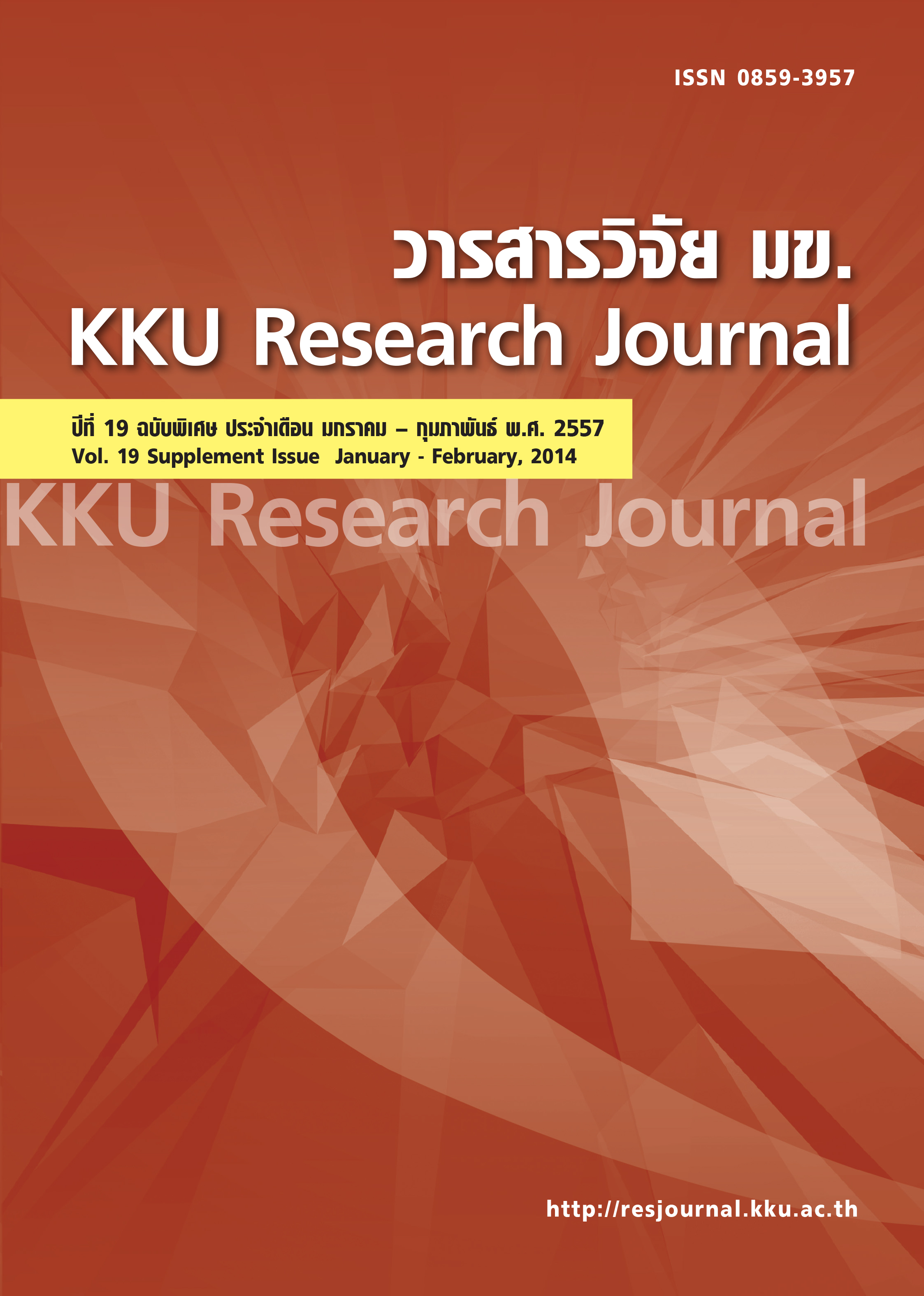Reduction of gossypol and increase in crude protein level of cottonseed cake using mixed culture fermentation
Main Article Content
Abstract
Cottonseed is a good source of high quality meal and edible oil. However it contains a toxic polyphenolic compound called gossypol, an anti-nutritious factor that limits the use of cottonseed cake (CSK) in non-ruminants feed. The aim of this paper was to study the effect of seven selected microbial strains and their combination on free gossypol (FG) and total gossypol (TG) detoxification, reduction in fibre content and also to evaluate the crude protein (CP) improvement during solid state fermentation of CSK. Initially, CSK contained 20.6% CP, 37.8% crude fibre, 0.28% FG and 2.37% TG. The microbial strains used were Saccharomyces cerevisiae, Pleurotus flabellatus MTCC 1799, Candida tropicalis, S. cerevisiae MTCC 6933, Monascus purpureus MTCC 1090, Pleurotus sajor-caju MTCC 1806 and Aspergillus oryzae MTCC 3782. The cultures were individually and in combinations inoculated in sterile CSK and incubated for 48hrs at 30 oC, after incubation, the level of FG and TG, crude fibre and CP were determined. The results showed that individually, C. tropicalis could reduce FG by 82.1% and M. purpureus MTCC 1090 could reduce TG by 59%. The significant gossypol detoxification was observed in culture combinations P. sajor-caju MTCC 1799 and S. cerevisiae MTCC 6933 (FG, 91.6% and TG, 65%) followed by C. tropicalis and S. cerevisiae (FG, 75% and TG, 67.7%). The combination ofP. sajor-caju MTCC 1799 and S. cerevisiae MTCC 6933 showed 6.5% CP improvement and 10.8% fibre reduction while C. tropicalis and S. cerevisiae exhibited excellent CP improvement (9.3%) and fibre reduction (11.3%). The study revealed that the mixed culture fermentation of CSK was more effective than single strain fermentation, which not only had higher gossypol reduction but also improved CP and decreased crude fibre contents.
Article Details
References
[2] Shazia Mannan, Muhammad Aslam Shad and Asia Parveen. Detection of a toxic phenolic compound in cottonseed extract and its products. Pakistan Journal of Nutrition. 2010. 9 910): 994-997.
[3] Roger, A., T.A. Geissman and J.D. Edwards. Gossypol, a pigment of cottonseed. Chemical. Rev. 1960. 60: 555–74.
[4] Robinson, P.H., G. Getachew, E.J. De Peters and M.C. Calhoun. Influence of variety and storage for up to 22 days on nutrient composition and gossypol level of Pima cottonseed (Gossypium spp.). Anim. Feed Sci. Technol. 2001. 91: 149–56.
[5] Francis, G., H.P.S. Makkar and K. Becker. Antinutritional factors present in plant-derived alternate fish feed ingredients and their effects in fish. Aquaculture, 2001. 199: 197–227.
[6] Santos, J.E.P., M. Villasenor, P.H. Robinson, E.J. Depeters and C.A. Holmberg. Type of cottonseed and level of gossypol in diets of lactating dairy cows: plasma gossypol, health and reproductive performance. J. Dairy Sci. 2003. 86: 892–905.
[7] Carruthers, N.J., M.K. Dowd and P.M. Stemmer. Gossypol inhibits calcineurin phosphatase activity at multiple sites. European J. Pharm. 2007. 555: 106–14.
[8] Willard, S.T., D.A. Neuendorff, A.W. Lewis and R.D. Randel. Effect of free gossypol in the diet of pregnant and postpartum Brahman cows on calf development and cow performance. Anim. Sci. 1995. 73: 496–507.
[9] Cherry, P. John, Gray and S. Marie. Methylene Chloride extraction of gossypol from cottonseed products. J. Food Sci. 1981. 46: 1726-1733.
[10] Rahma, E. H., M. S. Narasingo Rao. Gossypol removal and functional properties of protein produced by extraction of glanded cottonseed with different solvents. Food Sci. 1984. 49:1057- 1060.
[11] Barraza, M.L., C.E. Coppock, K.N. Brooks, D.L. Wilks, R.G. Saunders and G.W. Latimer. Iron sulfate and feed pelleting to detoxify FG in cottonseed diets for dairy cattle. J. Dairy Sci. 1991. 74: 3457–67.
[12] Tabatabai, F., A. Golian and M. Salarmoein. Determination and detoxification methods of cottonseed meal gossypol for broiler chicken rations. Agric. Sci. Technol. 2002. 16: 3–15.
[13] Nagalakshmi, D., V. R. B. Sastry and D. K. Agrawal. Detoxification of undecorticated cottonseed meal by various physical and chemical methods. Anim. Nutr. Feed Technol.2002. 2:2, 117-126.
[14] Shi, A.H., Y. Zhang, P. Qu, J.G. Yan and H.J. Xiao. Screening and breeding of highly-effected degrading cotton-phenol strains and study on detoxification technology and conditions. Acta Microbiol. Sin. 1998. 38: 318–20.
[15] Brock, T.D., M.T. Madigan, J.M. Martinko and J. Parker. Biology of Microorganisms. Prentice-Hall, Englewood cliffs, NJ. 1994.
[16] Pandey, A. Recent process development in solid state fermentation. Process Biochem.1992. 27: 109–17.
[17] Deschamps, F., C. Giuliano, M. Asther, M.C. Huet and S. Rooussos. Cellulase production by Trichoderma harzianum in static and mixed solid-state fermentation reactions under non-aseptic conditions. Biotechnol. Bioeng. 1985. 27: 1385–8.
[18] AOCS. Free and total gossypol methods. Official and tentative methods of the AOCS, 4th Ed. American oil chemists society, Chicago. 1989.
[19] AOAC. Official Methods of analysis, 16th edition. Association of Official Analytical Chemists, Washington, DC. 1999.
[20] Tecator. Determination of crude fibre in some feed and food samples by using the fibertec system and weende method. Application no 01. Tecator AB box 70, S-26301, Hoganaes, Sweden. 1978.
[21] Zhang, W.J., Z.R. Xu, S.H. Zhao, J.Y. Sun and X. Yang. Development of a microbial fermentation process for detoxification of gossypol in cottonseedmeal. Anim. Feed Sci. Technol. 2006. 135: 176–86.
[22] Prescott, L. M., J. P. Harley and D. A. Klein. Microbiology, Fifth Edition, the McGraw-Hill Companies, Inc. 2002. pp. 95-112.
[23] Mahmoud A. Khalaf and Samir A. Meleigy. Reduction of free gossypol levels in cottonseed meal by microbial treatment. Int. J. Agri. Biol. 2008. (10), 185-90.

